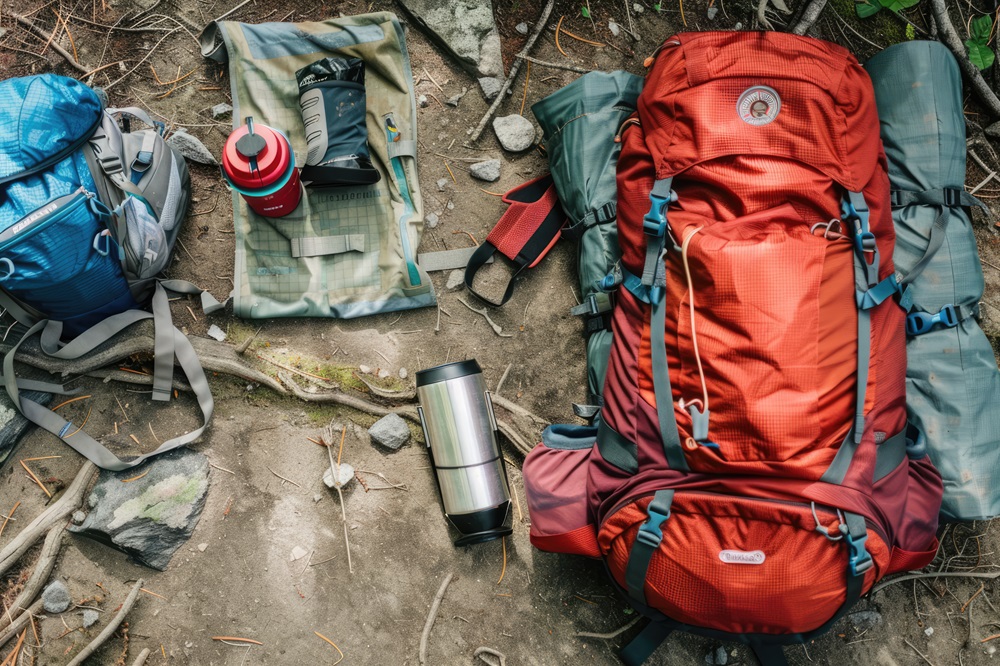When you’re shopping for used gear, one of the biggest challenges is figuring out exactly when it was made.
Serial numbers fade, labels peel off, and suddenly you’re left guessing whether that sleeping bag is two years old or ten.
You need to know the age because it affects safety, performance, and whether you’re getting a fair price.
Here’s how you can track down manufacturing dates even when the obvious markers are long gone.
What Happens When Serial Numbers Disappear?
You’ve probably seen it yourself. That promising backpack at the gear swap has a completely rubbed-off tag.
The tent you found online has zero readable stamps. Worn-off serial numbers happen all the time with outdoor equipment because this stuff gets used hard.
Sweat, sun, friction, and years of being stuffed into storage spaces destroy the very labels you need.
But here’s the thing: manufacturers leave multiple clues about when they made something. You just need to know where to look and what matters.
Can Date Codes Hide Elsewhere on Equipment?
Yes, and this is where you start your investigation. Manufacturers often stamp or print date codes in multiple locations as backups.
Check inside pockets, under flaps, along seams, and on the underside of buckles or straps. Some brands mold dates directly into plastic components like zipper pulls or buckle frames.
For sleeping bags and tents, look inside stuff sacks or on interior labels that don’t get as much wear. Backpack frames sometimes have stamped codes on the metal or plastic frame itself. Water bottles and hard-shell cases often have dates molded into the bottom.
The format varies wildly. You might see “0823” meaning August 2023, or “23/08” for the same month, or even “234” where “23” is the year and “4” represents the fourth quarter. Some companies use Julian dates where day 365 represents December 31st of a given year.
How Can Material Wear Tell You About Age?
Fabric degradation follows predictable patterns that you can use as rough timelines. Technical fabrics like nylon and polyester break down from UV exposure at measurable rates.
If you see significant fading, particularly on areas that face upward when the gear is in use, you’re looking at equipment that’s spent multiple seasons outside.
Waterproof coatings degrade too. A tent fly or rain jacket that looks good but beads water poorly has likely lost its DWR treatment, which typically happens after 3-5 years of regular use even with proper care.
Delamination (when layers separate and look cloudy or sticky) typically shows up after 5-7 years on technical shells and after 7-10 years on tent floors.
Foam components give you clear signs. Sleeping pad foam compresses permanently over time. Press down on different sections.
If some areas compress way more than others, or if the whole pad feels thin compared to specs, it’s been used hard for several years. Backpack shoulder straps and hip belts do the same thing.
| Material Type | Degradation Sign | Typical Timeline |
| Nylon/Polyester fabric | Visible fading, thinning | 4-7 years moderate use |
| Waterproof coatings | Poor water beading, stickiness | 3-5 years active use |
| Foam padding | Permanent compression, crumbling | 5-8 years regular use |
| Rubber components | Hardening, cracking | 6-10 years exposure |
What Do Component Parts Reveal?
Smart shoppers track down component manufacturers and their date marking systems. Zippers from YKK (the most common brand) often have date codes on the zipper pull or slider.
Buckles from manufacturers like ITW Nexus frequently have year stamps molded right into the plastic.
Velcro loses grip strength over time in a way you can feel. Fresh hook-and-loop fasteners require real force to separate.
If the velcro on a jacket or pack pulls apart easily, you’re looking at something that’s been opened and closed hundreds of times over multiple years.
Elastic components tell stories too. Drawcords, shock cords, and elastic cuffs all lose tension permanently. You can’t restore this through washing or treatment.
If elastic feels loose or looks stretched out when relaxed, the gear has significant age on it.
How Do Design Changes Help Date Equipment?
Manufacturers update their products constantly. Model transitions typically happen yearly, and tracking these changes helps you date gear accurately.
Look for distinctive design features, color combinations, or logo styles that were specific to certain production years.
Search online forums and gear review sites where people discuss when specific features appeared or disappeared.
Someone out there documented that the hip belt pocket design changed in 2021, or that a particular color was only available in 2019. These details narrow your timeline significantly.
Contact the manufacturer directly with photos of the specific design features. Customer service teams often maintain records of when they changed zipper types, adjusted pocket layouts, or modified strap systems.
They might not give you an exact date, but they can often tell you “that design was used between 2018 and 2020.”
Can Warranty Cards or Original Packaging Provide Clues?
If you’re buying from an individual seller, ask about original documentation. Warranty cards, receipts, or even the original stuff sack sometimes have purchase dates written on them. Many people write the purchase date inside their gear for warranty purposes.
Check if the manufacturer offers warranty lookup services. Some companies let you submit photos of the gear, and they’ll search their records based on design features and tell you the production period.

Where Can Expert Communities Help?
Online communities built around specific activities have members who can date gear just by looking at photos.
Post clear images to subreddits, Facebook groups, or forums dedicated to backpacking, climbing, or whatever category your used gear falls into.
Include close-ups of logos, tags (even damaged ones), zipper pulls, and any distinctive features.
Gear rental companies and used equipment stores employ staff who handle thousands of pieces and develop expertise in dating items.
They might help you identify production years if you send them photos or bring items in.
Frequently Asked Questions
How can I find the manufacturing date if the serial number is missing?
Answer: Check hidden spots like inside pockets, under flaps, or on buckles and zippers. Many brands stamp small date codes on plastic parts or inside seams that most people overlook.
Can material wear really tell how old used gear is?
Answer: Yes. Faded nylon, sticky waterproof coatings, or compressed foam often mean 4–8 years of use. The more uneven or brittle the materials feel, the older the gear likely is.
Where else should I look for hidden date codes on used outdoor equipment?
Answer: Inspect plastic parts like YKK zippers, ITW Nexus buckles, and even water bottle bottoms. These often include small codes showing production year and quarter.
How can design changes help identify gear age?
Answer: Compare your gear’s features—pocket layouts, logo style, colorways, or buckle shapes—to past product photos or reviews online. Manufacturers update designs yearly, so these clues reveal the production window.
Who can help me identify the age of used gear if I’m still unsure?
Answer: Join outdoor gear forums, Reddit groups, or contact the manufacturer with photos. Experienced members or brand reps can often pinpoint a model’s year range within minutes.



